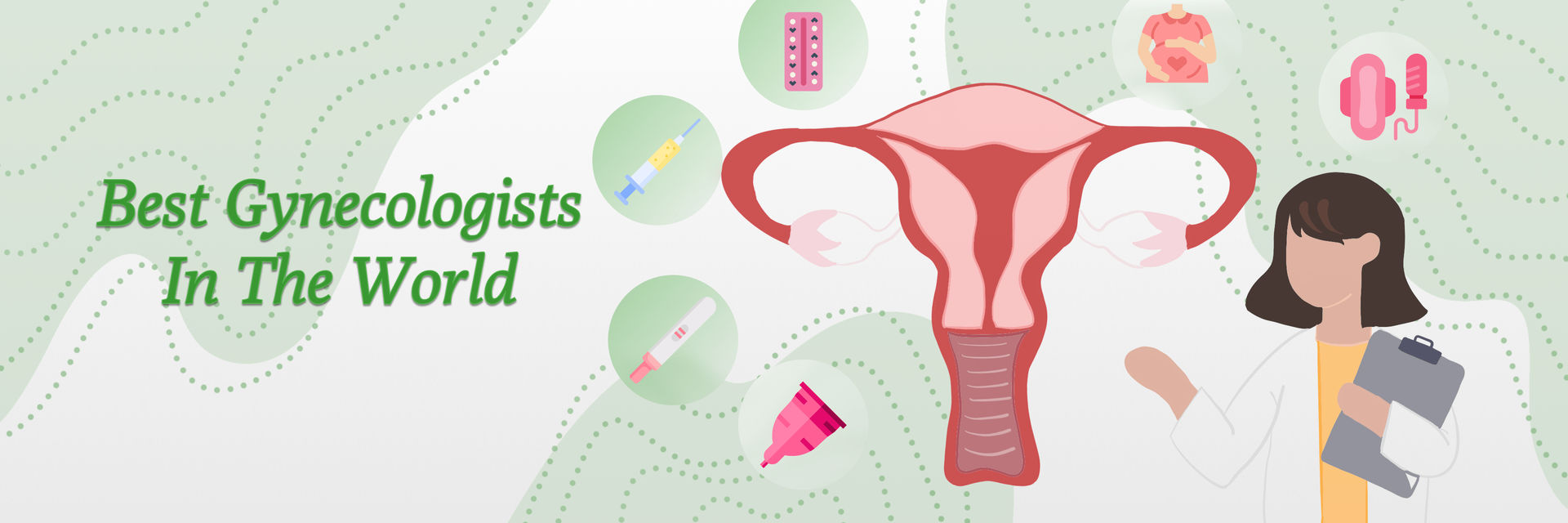Are you starting a pregnancy journey?
It's natural to be buzzing with excitement and curiosity.
One term you might bump into is "arcuate uterus." So, what's that? Simply put, it's a slight variation in the shape of the uterus. If you hear about "Arcuate Uterus Pregnancy," it means a pregnancy in a woman with this type of uterus. Now, many women with this shape have completely normal pregnancies. But some might face a few challenges. If you're an expecting mom or planning for a child, knowing about "Arcuate uterus Pregnancy" is critical. It helps us prepare for risks and make the best care choices. Let's unpack this topic and see how an arcuate uterus might touch the pregnancy journey.
Your reproductive health is too important to overlook – book your appointment now and learn more about what an arcuate uterus means for you.
An arcuate uterus, often described as a minor anomaly in uterine shape, is more common than you might realize.
The occurrence of it varies between 5% and 11.8% in different studies, and can be as low as 3.9% in the general population.
In simple terms, an arcuate uterus is a slight dip at the top part of your uterine cavity—like a subtle quirk in your anatomy. What's intriguing is that, for most individuals, having an arcuate uterus doesn't significantly affect pregnancy or raise significant health concerns. Often, it's discovered during routine prenatal ultrasounds or other pelvic scans, and many may not even be aware of it.
Want a quick fact?
An arcuate uterus usually shows up on ultrasounds or MRI scans. If you've had one recently, your doctor might have mentioned it.
Could It Affect My Pregnancy?
The million-dollar question! Well, there's been some buzz around this in the medical world. Let's break it down!
How can an arcuate uterus impact pregnancy?
The arcuate uterus is a slight variation in the shape of the uterus. How might this influence pregnancy?
Let's delve into some of the observations:
1. Miscarriage: Research indicates that women with an arcuate uterus might experience a marginally higher risk of a miscarriage during the first trimester compared to those with a regular uterine shape. But remember, the data isn't definitive. Many women with this shape have successful pregnancies.
2. Preterm Birth: There's a possibility that an arcuate uterus can lead to a higher chance of preterm birth. Still, solid evidence is lacking.
3. Fetal Positioning: An arcuate uterus might be linked with a greater likelihood of the fetus being in an unconventional position, like breech, at delivery time.
4. C-section: Given the potential for unusual fetal positioning or other concerns, cesarean deliveries might be more common.
5. Labor Challenges: The labor process might face minor hitches, such as delays.
However, it's vital to highlight that numerous women with an arcuate uterus undergo hassle-free pregnancies and give birth to healthy infants. Compared to more distinct uterine variations like a bicornuate or septate uterus, the risks tied to an arcuate uterus are generally minimal.
Consult your medical expert for concerns about uterine shape and pregnancy. Preferably reproductive endocrinologist or specialist gynecologist.
A Bit About Uterine Shapes: The shape of a uterus is determined early on, during embryonic development. The ducts that eventually become the reproductive tract fuse in specific ways, giving the uterus its distinct shape. The reasons? It's a mix of genetics, environmental factors, and some elements that remain a puzzle.
Each pregnancy journey is individual. An arcuate uterus doesn't mean you won't have a smooth experience.
The arcuate uterus is a congenital condition, meaning it's present from birth due to developmental variations. Let's break down its origin and how it comes.
What Causes an Arcuate Uterus?
1. Origin: The condition results from the atypical development of the müllerian ducts during embryonic growth.
2. Müllerian Ducts: In the fetus, the female reproductive system starts as two Müllerian ducts. These ducts lay the foundation for the fallopian tubes, uterus, cervix, and upper portion of the vagina.
3. The Fusion Process: A typical uterus forms when these ducts merge. Following the fusion, the central septum, or the tissue lying between the ducts, undergoes resorption.
4. Incomplete Resorption: The arcuate uterus is thought to arise when this septum isn't entirely reabsorbed
While the exact triggers for müllerian duct anomalies remain elusive, several factors could play a part.
Genetics: Family history might influence the development.
Environmental Factors: Exposures during pregnancy might have a role.
Other Influences: There could be other unidentified factors at play.
However, in most situations, pinpointing the direct cause of an arcuate uterus is challenging.
If there's a suspicion of an arcuate uterus, doctors typically turn to ultrasound for detection. In instances where more detailed imagery is beneficial, an MRI may be recommended.
If you're contemplating a diagnostic test or seek more information, a discussion with your gynecologist would be the ideal starting point. They're well-equipped to guide you.
Understand the causes of an arcuate uterus. Take the first step towards informed health choices. Contact us today!
How Is an Arcuate Uterus Diagnosed?
The arcuate uterus is identified using a variety of advanced imaging techniques. Here's a breakdown of the primary diagnostic methods employed:
1. Ultrasound: This technique is frequently the initial step in assessing the uterus's form and anatomy.
- Transvaginal Ultrasound: Inserting an ultrasound probe into the vagina provides a clearer view of the uterus than transabdominal ultrasound.
- 3D Ultrasound: Sometimes employed for a more intricate visualization, this can better differentiate among varied uterine anomalies.
2. Magnetic Resonance Imaging (MRI): MRI is useful for detailed imaging of the uterus, especially when the diagnosis is uncertain or when distinguishing between different müllerian anomalies.
3. Hysterosalpingogram (HSG): An X-ray procedure that involves injecting a contrast dye into the uterine cavity and capturing images.
Utility: Besides discerning the shape of the uterine cavity, HSG can also check the fallopian tubes' openness. In the context of an arcuate uterus, it might depict a minor indentation in the fundal area.
4. Hysteroscopy: In this method, a slender, illuminated telescopic device known as a hysteroscope is introduced via the cervix into the uterus.
Function: It facilitates a direct visual examination of the uterine cavity's insides. It can serve diagnostic (observing and diagnosing) and therapeutic (such as septum resection) purposes.
While ultrasound is frequently the preferred initial technique, it's worth noting that MRI is viewed as the most reliable method for diagnosing and distinguishing müllerian duct anomalies.
Concerned about the impact of an arcuate uterus on pregnancy? Take the first step towards understanding and support. Contact us today for guidance.
But what can be done when an arcuate uterus is identified before or during pregnancy? Let's explore the available treatment options to ensure a smooth and healthy maternal journey.
What Are the Treatment Options for Arcuate Uterus Before or During Pregnancy?
An arcuate uterus is a slight irregularity in the uterus. For many women, it doesn't cause big problems.
But if it's causing trouble with having children, there are some ways to help:
- When is treatment needed: Usually, you don't need treatment for an arcuate uterus because most women can have normal pregnancies with it. However, if a woman has many miscarriages because of it, treatment might be needed.
- Surgery to fix it - Metroplasty: The main way to fix an arcuate uterus is with surgery called metroplasty. This surgery makes the uterus's shape better by removing the small dent or wall in it.
Methods of Metroplasty:
- Hysteroscopy: This is a small surgery using a thin tube with a light that goes inside the uterus. The surgeon can see and remove the dent using special tools. This way is better because it doesn't need a big cut, and it helps with a quicker recovery and less pain after the surgery.
- Laparotomy: This way is less common and needs a big cut in the belly to reach the uterus. It's used when the arcuate uterus is more severe or if other belly problems need fixing.
- When to do the surgery: If you find out about the arcuate uterus during pregnancy, it's usually better to wait until after the pregnancy to do the surgery. This is because there could be risks during pregnancy, and it's better to watch closely and act if there are problems.
- Get advice from experts: Before you decide on any treatment, talk to a doctor who knows about uterine problems. They can tell you about the benefits, risks, and other options.
Remember, an arcuate uterus doesn't always cause problems. Many women with it have kids without issues. So, if you want to have a family, it doesn't have to be a big problem. Just get advice, talk to experts, and stay hopeful!
The connection between an arcuate uterus and having a baby is a topic that's worth looking into. How does this small issue in the uterus affect getting pregnant? Let's find out.
How Can an Arcuate Uterus Affect Fertility and Conception?
An arcuate uterus is a slight deviation from the typical uterine shape, and its relationship to fertility and conception has been the subject of discussion within the medical world.
Here's a breakdown of what we currently understand
1. Fertility and Conception:
- Ability to Conceive: Generally, an arcuate uterus does not significantly hinder a woman's capacity to become pregnant. A large number of women with this condition successfully conceive without challenges.
- Conception Process: The arcuate uterus usually doesn't obstruct the conception process, which entails the union of an egg and sperm in the fallopian tubes.
2. Pregnancy Implications:
- Miscarriage: Some studies point to a possible increased risk of miscarriages during the first trimester for women with an arcuate uterus. If recurrent miscarriages occur, some medical professionals might suggest metroplasty—a surgical approach to rectifying the uterine shape—as a way to enhance pregnancy outcomes.
- Implantation: The uterus's precise shape and lining can impact where an embryo embeds itself. While some areas of the uterus may be more conducive to implantation, the exact clinical implications of an arcuate uterus remain undetermined.
3. Recommendations:
If you or someone you know has an arcuate uterus and faces conception challenges or recurrent miscarriages, it's paramount to seek advice from a reproductive endocrinologist or a gynecologist. They can offer insights into potential treatments or interventions tailored to individual needs.
As we move forward in our exploration, let's turn our attention to a critical aspect: the considerations for delivery when an arcuate uterus is in the picture. What factors should mother and healthcare providers keep in mind when it comes to childbirth with this unique uterine shape?
Your well-being is our priority - call us to book your appointment today
What Are the Considerations for Delivery with an Arcuate Uterus?

When a woman has an arcuate uterus and is expecting a baby, the slightly altered shape of her womb might raise some questions about the birthing process.
Here are the key points to understand about delivery in the context of an arcuate uterus:
1. Fetal Position Matters:
- Fetal Malpresentation: The uterus's shape might make certain fetal positions more probable, like breech or transverse lie. This can influence decisions around the delivery method.
2. Mode of Delivery:
- Cesarean Consideration: A higher likelihood of cesarean delivery exists because of potential fetal positions or other issues. However, many women with this condition can have a vaginal birth successfully.
3. Monitoring During Labor:
- Labor Progression: There's a possibility of challenges, such as stalled labor or issues with the baby descending. These can be keenly observed and managed during labor.
- Stay Vigilant: An arcuate uterus, albeit a mild variation, necessitates keen monitoring during pregnancy and labor to address potential challenges preemptively.
4. Preterm Labor Signs:
- Preterm Birth Potential: An arcuate uterus may have links to preterm deliveries. Awareness of preterm labor signs and immediate medical consultation, if they manifest, are essential.
5. Post-delivery considerations:
- Postpartum Hemorrhage: Any deviation in the uterus's structure might, in theory, increase the risk of postpartum bleeding. This is due to potential complications with the uterus contracting after birth.
6. Personalized Care:
- Tailored Decisions: Delivery method decisions must be personalized based on pregnancy circumstances and complications.
7. Regular check-ups:
- Prenatal Care: Pregnant women with an arcuate uterus should ensure consistent prenatal check-ups and maintain an open line of communication with their healthcare provider.
An arcuate uterus might be a slight curveball in the pregnancy journey, but it doesn't deter the joy and anticipation of welcoming a new life. It's all about staying informed and positive and relying on medical guidance.
If this info resonated with you or if you believe it might help another mom-to-be, don't hesitate to pass it on. Sharing insights empowers everyone, particularly when navigating the wondrous path of motherhood.
FAQs
1. Can an arcuate uterus be corrected through non-surgical methods?
- No, surgical procedures like metroplasty are the primary treatment options for correcting an arcuate uterus.
2. Is it possible for an arcuate uterus to worsen over time?
- An arcuate uterus typically remains stable and does not worsen over time.
3. Can an arcuate uterus lead to stillbirths or recurrent pregnancy loss?
- While it's rare, in some cases, an arcuate uterus might be associated with recurrent miscarriages, but stillbirths are uncommon.
4. Are there specific exercises or physical activities to avoid during pregnancy with an arcuate uterus?
- Most exercises and physical activities are safe during pregnancy with an arcuate uterus. However, it's essential to consult with your healthcare provider for tailored advice.
5. Can an arcuate uterus affect the positioning of the baby during pregnancy?
- An arcuate uterus may slightly increase the risk of breech presentation (baby's buttocks or feet first), but most babies reposition themselves before delivery.
6. What is the likelihood of needing a cesarean section (C-section) with an arcuate uterus?
- In most cases, women with an arcuate uterus can have a vaginal delivery. The need for a C-section would depend on individual circumstances and the position of the baby.
7. Can an arcuate uterus lead to premature birth?
- While it's not common, an arcuate uterus may slightly increase the risk of preterm birth in some cases.
8. Are there support groups or communities for women with arcuate uteruses to share experiences and advice?
- Yes, there are online and in-person support groups where women can connect, share experiences, and offer advice about managing pregnancy with an arcuate uterus.
Reference-
https://my.clevelandclinic.org/health/
https://carefertility.com.au/resources






